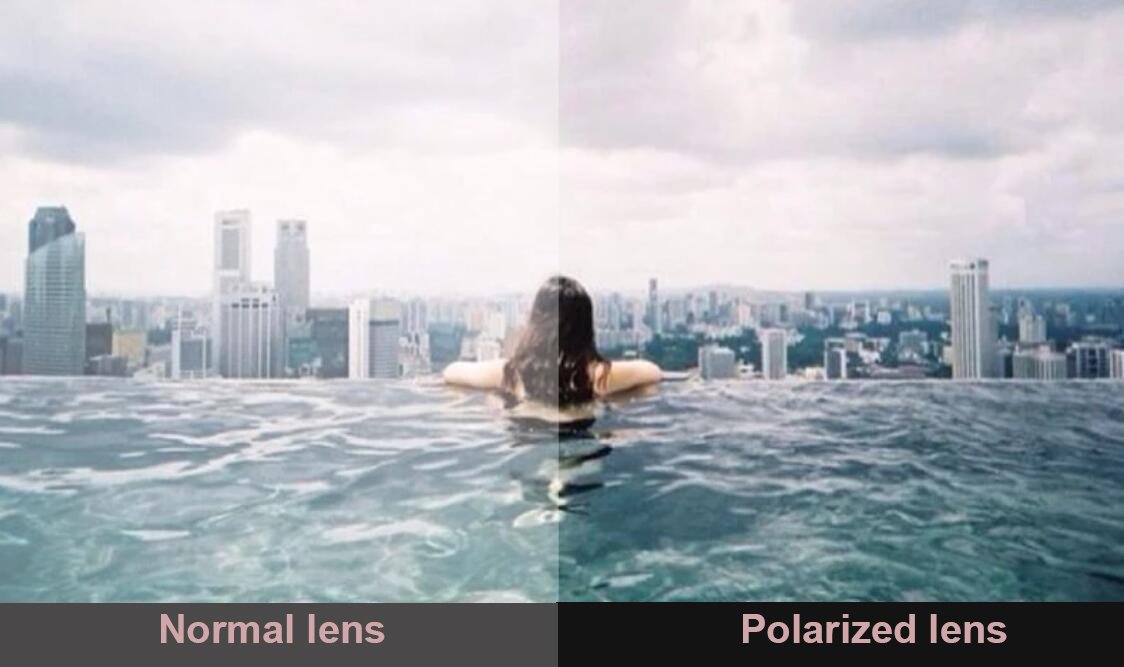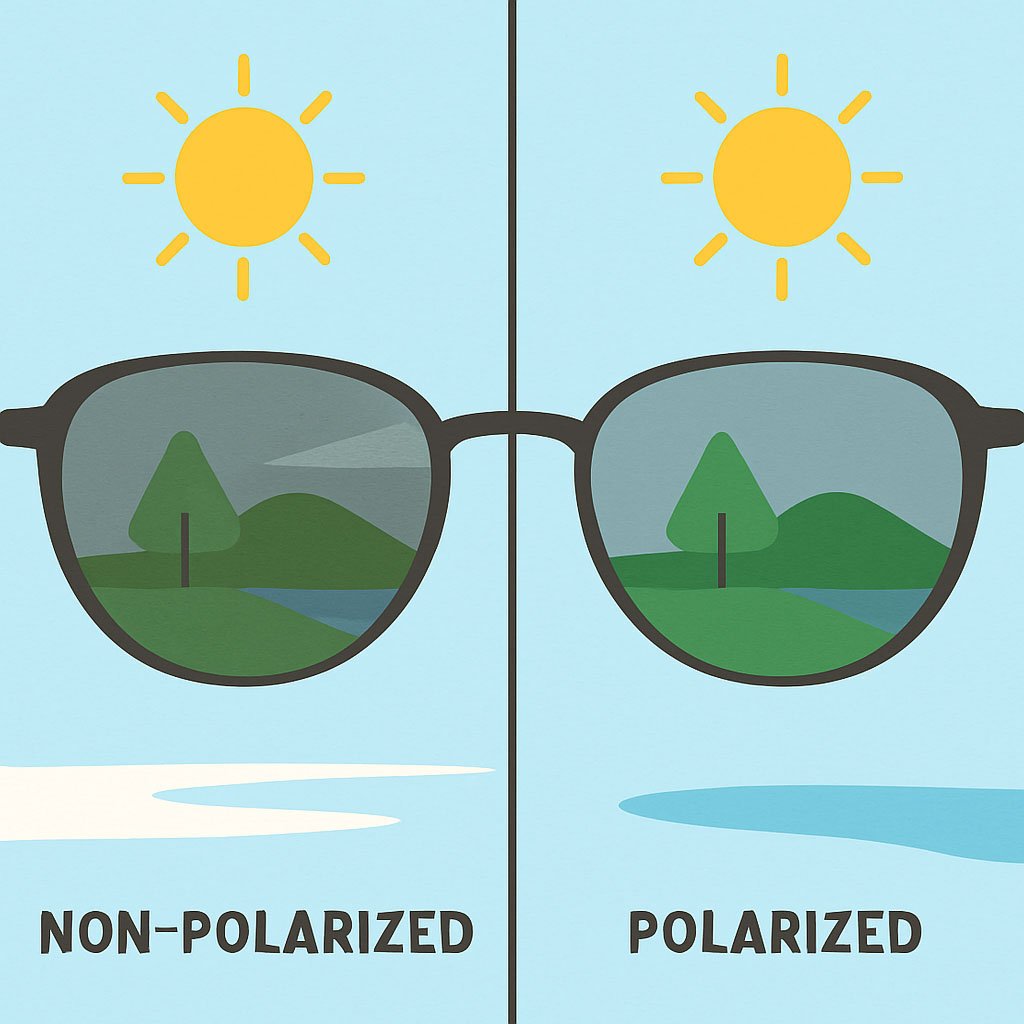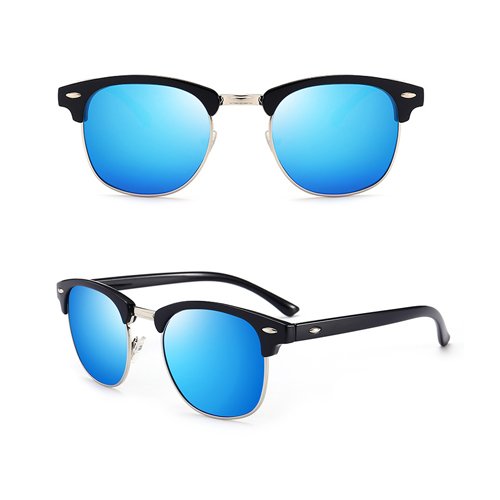Polycarbonate sunglasses non polarized vs polarized
Polycarbonate sunglasses are a popular choice for many. They offer durability and excellent UV protection. But when it comes to choosing between non-polarized and polarized lenses, the decision can be tricky.
Both types have their unique benefits. Polarized lenses reduce glare, making them ideal for outdoor activities. Non-polarized lenses, on the other hand, are versatile and often more affordable.
Understanding the differences can help you make an informed choice. Whether you prioritize fashion, function, or both, there’s a pair of polycarbonate sunglasses for you. Let’s examine the features and advantages of each type to determine the ideal fit for your needs.
What Are Polycarbonate Sunglasses?
Polycarbonate sunglasses are known for their durability and resilience. They stand out due to the robust material used in their lenses. Polycarbonate is a thermoplastic polymer, offering remarkable impact resistance compared to glass or traditional plastic lenses.
These sunglasses are a top choice for outdoor enthusiasts. They offer excellent UV protection, shielding your eyes from harmful UVA and UVB rays. This makes them an essential accessory for anyone who spends time outdoors
Additionally, polycarbonate lenses are lightweight, offering comfort for prolonged wear. This makes them ideal for both everyday fashion and demanding activities. The shatterproof design of these products enhances safety, an essential feature for sports and outdoor activities.
Key Features:
- Durability: Highly impact-resistant and shatterproof
- UV Protection: Blocks 100% UVA and UVB rays
- Lightweight: Comfortable for extended use
- Versatility: Suitable for both fashion and function
With their versatile features, polycarbonate sunglasses cater to a wide range of preferences and needs.
Understanding Polarized vs Non-Polarized Lenses
Polarized and non-polarized lenses serve different purposes and have distinct benefits. It’s essential to understand these differences when choosing sunglasses.
Polarized lenses reduce glare from reflective surfaces such as water, snow, and roads. They enhance visual clarity and comfort, making them ideal for outdoor activities. This feature is beneficial for activities like driving, fishing, or skiing due to significant glare.
Non-polarized lenses, on the other hand, do not offer glare reduction. However, they still provide excellent UV protection, which is crucial for eye health. Non-polarized lenses are often more budget-friendly and are suitable for everyday wear.
When deciding between the two, consider your environment and activities. Polarized lenses are ideal for bright environments, while non-polarized lenses are adaptable for a variety of conditions.
Key Differences:
- Glare Reduction: Polarized lenses reduce glare; non-polarized do not.
- Visual Clarity: Polarized lenses enhance clarity and contrast.
- Cost: Non-polarized lenses are typically more affordable.
- Everyday Use: Non-polarized are versatile and suitable for daily wear.

Choosing between polarized and non-polarized depends on your lifestyle and specific needs, guiding you to the perfect eyewear choice.
Benefits of Polycarbonate Lenses
Polycarbonate lenses offer numerous advantages, making them a popular choice for many. Their durability and impact resistance are unmatched, ideal for active lifestyles.
These lenses are much lighter than glass, which enhances comfort during extended wear. This lightweight nature reduces pressure on the nose and ears, a key benefit for all-day use.
Polycarbonate lenses offers complete UV protection, essential for protecting eyes from harmful UVA and UVB rays. This feature reduces the risk of cataracts and other eye conditions.
Although not as scratch-resistant as glass, polycarbonate lenses are still tough and shatterproof. Proper care can extend their lifespan significantly.
Key Benefits of Polycarbonate Lenses:
- Durability: Highly impact-resistant.
- Lightweight: Comfortable for prolonged use.
- UV Protection: Blocks 100% of harmful rays.
- Safety: Shatterproof material.
These benefits collectively make polycarbonate lenses a top choice for those seeking protection without compromising on comfort or style.

Polarized Polycarbonate Sunglasses: Features and Advantages
Polarized polycarbonate sunglasses offer significant benefits for outdoor enthusiasts and drivers. These sunglasses are designed specifically to reduce glare from reflective surfaces.
By filtering horizontal light waves, polarized lenses greatly enhance visual clarity and comfort. This is especially useful for activities near water, on snowy terrains, or sunny roadways.
These sunglasses can improve color contrast and depth perception, providing a more vivid visual experience. Such enhancements can be crucial during outdoor sports where every detail counts.
While polarized sunglasses offer many advantages, they are not without limitations. Viewing LCD screens, such as car displays or smartphones, might become challenging.
Advantages of Polarized Polycarbonate Sunglasses:
- Glare Reduction: Excellent for bright surfaces.
- Enhanced Contrast: Better color and depth perception.
- Eye Comfort: Reduced strain during extended wear.
- Safety: Improved visibility reduces accident risk.
For individuals sensitive to bright light or prone to headaches, these sunglasses can be a relief. They blend fashion and function, making them a smart choice for both style and protection.
Non-Polarized Polycarbonate Sunglasses: Features and Advantages
Non-polarized polycarbonate sunglasses are versatile and practical for various settings. They provide essential UV protection, shielding your eyes from harmful rays.
These sunglasses are more budget-friendly than polarized ones, making them a great option for those seeking affordability and basic eye protection.
Non-polarized lenses perform well in everyday environments, making them ideal for casual wear. Unlike polarized lenses, they do not interfere with digital screens, providing clearer visuals when using devices.
Despite lacking specialized glare reduction, non-polarized sunglasses can still be highly beneficial. Their simplicity and effectiveness in offering general protection are valuable for many users.
Advantages of Non-Polarized Polycarbonate Sunglasses:
- Affordability: Lower cost than polarized options.
- Digital Compatibility: Clear view when using screens.
- General UV Protection: Blocks harmful UVA and UVB rays.
- Versatility: Suitable for various activities and conditions.
Fashion and Style: Choosing the Right Sunglasses for You
Fashion sunglasses come in various shapes, sizes, and colors. Finding the perfect pair is about blending style with function. Whether you prefer bold frames or subtle designs, there’s something for everyone.
When choosing sunglasses, consider your face shape and personal style. Round faces might suit square frames, while oval faces can wear almost any design. Besides appearance, ensure the sunglasses provide adequate UV protection.
Remember, your sunglasses are an extension of your personality. They can enhance your overall look while safeguarding your eyes.
Style Considerations:
- Face Shape: Complement your facial features.
- Color: Match your wardrobe and skin tone.
- Frame Design: Express your individuality.
Experiment with different styles, but prioritize comfort and protection. Your ideal sunglasses should align with your taste while ensuring your eyes are well-protected.
How to Choose: Polarized or Non-Polarized Polycarbonate Sunglasses?
Choosing between polarized and non-polarized polycarbonate sunglasses depends on your lifestyle needs. Consider your usual activities and environments. Knowing when and where you wear sunglasses can help make an informed decision.
Polarized sunglasses are ideal for outdoor activities. They reduce glare from surfaces like water or snow, enhancing visibility and comfort. If you frequently engage in water sports or drive in bright conditions, polarized lenses could be beneficial.
On the other hand, non-polarized sunglasses are versatile and often more affordable. They’re perfect for everyday wear, especially if glare reduction isn’t crucial. These sunglasses provide essential UV protection while maintaining clear vision for digital screens.
Frequently Asked Questions
When it comes to polycarbonate sunglasses, many people have common questions. Here, we’ll address some of these to provide clarity. Whether you’re considering polarized or non-polarized options, understanding the basics can aid your choice.
FAQs:
- Are polycarbonate lenses durable?
- Yes, they are impact-resistant and lightweight.
- Do both lens types offer UV protection?
- Absolutely, both provide 100% UV protection.
- Are polarized lenses more expensive?
- Generally, they cost more due to added benefits.
If further details are needed, explore specific brands or consult eyewear professionals for personalized advice.
Which Polycarbonate Sunglasses Are Best for You?
Choosing between polarized and non-polarized polycarbonate sunglasses depends on your lifestyle and needs. Consider the activities you engage in frequently. If you spend a lot of time outdoors in bright conditions, polarized lenses might offer the best experience.
For those who desire versatile, everyday wear with fundamental UV protection, non-polarized sunglasses can be sufficient. They are often more affordable and do not compromise on essential eye safety. Style enthusiasts can find both types in varied fashionable designs.
Ultimately, the best choice should balance your preferences, budget, and intended use. Both options provide significant benefits, ensuring that whatever you choose, you’ll enjoy comfort and protection.



